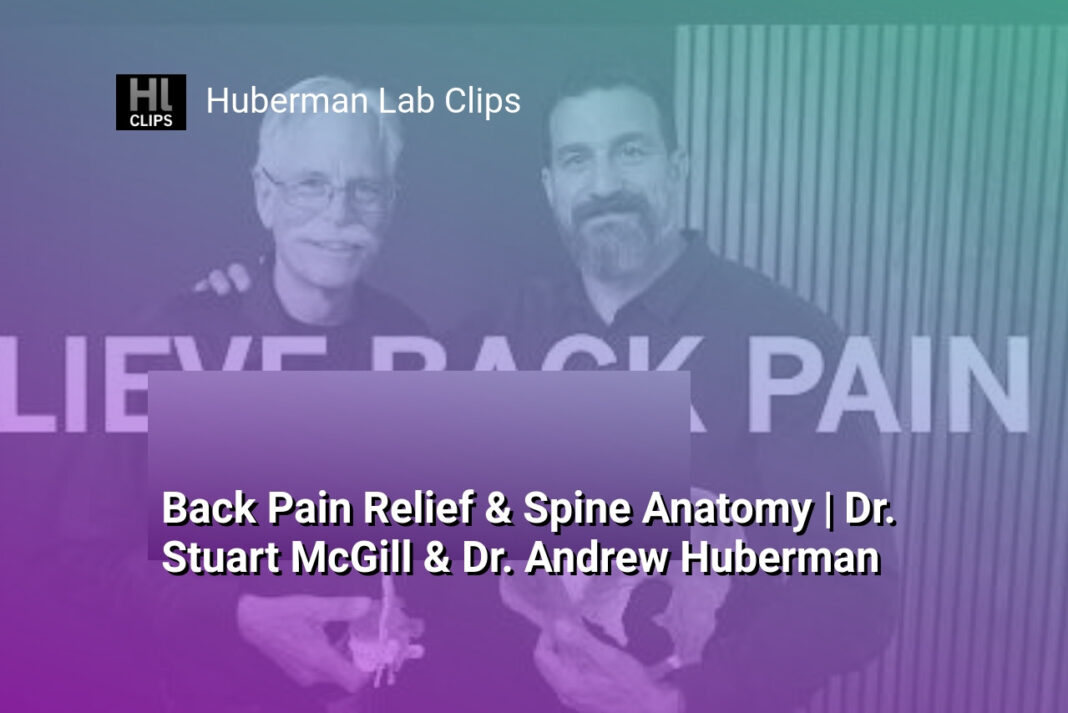The Bottom Line:
Here is a summary of the key points from the text in the requested format:
- The carbon dioxide tolerance test is a simple breathing assessment that can provide insights into an individual’s physiology and autonomic nervous system state.
- A shorter exhale duration (under 30 seconds) indicates a more sympathetic-dominant, alert, and potentially anxious state, while longer exhale durations (45-60 seconds) indicate a calmer, more parasympathetic-dominant state.
- The test can be useful for assessing post-exercise recovery, as well as morning “readiness” upon waking, by providing an objective measure of autonomic balance.
- The test is easy to perform, requiring only a full inhale followed by a slow, controlled exhale through the nose while timing the duration.
- The test can be a valuable tool for athletes, students, parents, and anyone interested in understanding and regulating their physiology and psychology through the use of breathwork and respiration.
The Carbon Dioxide Tolerance Test: What It Is and How to Do It
Assessing Your Respiratory Fitness: The Carbon Dioxide Tolerance Test
The carbon dioxide tolerance test is a simple yet powerful tool for evaluating your respiratory fitness and overall physiological state. This assessment provides valuable insights into your body’s ability to regulate carbon dioxide levels, which is a crucial aspect of respiratory function and overall health.
How to Perform the Carbon Dioxide Tolerance Test
To perform the test, start by sitting or lying down in a relaxed position for a couple of minutes. This allows your body to settle into a baseline state. Once you’re ready, take a full, deep breath through your nose, and then exhale as slowly and controlled as possible, also through your nose. The key is to avoid using your mouth, as this can introduce additional variables that can skew the results.
As you exhale, start a timer and continue breathing out until you can no longer sustain the exhalation. The duration of your exhalation, measured in seconds, is the primary metric you’ll be tracking. This is known as your carbon dioxide discard rate.
Interpreting the Results
The duration of your exhalation provides valuable insights into your physiological state:
– If your exhalation lasts 30 seconds or less, it may indicate a more sympathetic-leaning state, meaning your body is in a more alert, potentially anxious mode. This could be due to factors like recent caffeine intake or lack of relaxation.
– Exhalations in the 30-45 second range suggest a more balanced state, with your autonomic nervous system in a more neutral position.
– Longer exhalations, in the 60-90 second range, indicate a more parasympathetic-dominant state, where your body is in a more relaxed, recovery-focused mode.
These results can inform your breathing practices, exercise routines, and overall lifestyle choices to help optimize your respiratory fitness and physiological well-being.
The carbon dioxide tolerance test can be a valuable tool for assessing your baseline respiratory function, tracking progress over time, and identifying areas for improvement. By incorporating this simple assessment into your routine, you can gain valuable insights into your body’s inner workings and make informed decisions to support your overall health and performance.
Interpreting the Results: Understanding Your Physiological State
Assessing Your Physiological State: Insights from the Carbon Dioxide Tolerance Test
The carbon dioxide tolerance test provides valuable insights into your physiological state by measuring your ability to exhale carbon dioxide. This test offers a window into your autonomic nervous system, revealing whether you are in a more sympathetic-dominant (alert, aroused) or parasympathetic-dominant (calm, relaxed) state.
Interpreting the Exhale Duration
The duration of your controlled exhale through the nose is the key metric in this test. A shorter exhale time, typically under 30 seconds, suggests a more sympathetic-leaning state. This may indicate increased alertness, arousal, or even mild anxiety. On the other hand, an exhale duration of 30 to 45 seconds is considered a more balanced, calmer state. As the exhale time extends beyond 60 seconds, it often correlates with a more parasympathetic-dominant state, associated with deeper relaxation and recovery.
Applying the Test for Different Purposes
The carbon dioxide tolerance test can be a useful tool in various contexts. After a strenuous workout, it can help assess whether you have successfully entered a recovery state, indicating your readiness for the next training session. Upon waking in the morning, the test can provide insights into your “morning readiness,” reflecting your baseline physiological state before the day’s activities. Additionally, this test can be employed to monitor the effects of breathing exercises, meditation, or other interventions designed to influence your autonomic balance.
By understanding the implications of your carbon dioxide tolerance test results, you can gain valuable insights into your current physiological state and make informed decisions about your activities, recovery, and overall well-being.
Applications of the Carbon Dioxide Tolerance Test
Assessing Physiological States with the Carbon Dioxide Tolerance Test
The carbon dioxide tolerance test can provide valuable insights into an individual’s physiological state and can be applied in various contexts. One key application is in the post-exercise recovery phase. After a strenuous workout, the test can be used to determine whether an individual has successfully entered a state of recovery and downregulation.
Evaluating Morning Readiness
Another important application of the carbon dioxide tolerance test is in assessing an individual’s morning readiness. Upon waking, it is recommended to wait approximately 15 minutes before performing the test, allowing time to get out of bed, use the restroom, and hydrate. This helps ensure that the test provides an accurate assessment of the individual’s baseline physiological state, rather than being influenced by the immediate effects of waking up.
Monitoring Stress and Anxiety Levels
The carbon dioxide tolerance test can also be used to monitor an individual’s stress and anxiety levels. A shorter exhale duration, typically less than 30 seconds, may indicate a more sympathetic-leaning state, characterized by increased alertness and arousal. This does not necessarily imply a clinical diagnosis of anxiety, but rather suggests a state of higher physiological arousal. In contrast, longer exhale durations, in the range of 30 to 45 seconds, are generally associated with a calmer, more parasympathetic-dominant state.
By regularly performing the carbon dioxide tolerance test, individuals can gain valuable insights into their physiological responses to various stimuli, such as exercise, stress, or changes in daily routines. This information can then be used to inform personalized strategies for managing stress, improving recovery, and optimizing overall well-being.
Incorporating the Test into Your Routine: Morning, Post-Exercise, and Beyond
Establishing a Consistent Routine
Incorporating the Carbon Dioxide Tolerance Test into your daily routine can provide valuable insights into your physiological state. One recommended approach is to perform the test first thing in the morning, after you’ve had a chance to get up and move around for about 15 minutes. This allows you to establish a baseline assessment of your “morning readiness” before the demands of the day begin to influence your physiology.
Post-Exercise Evaluation
The Carbon Dioxide Tolerance Test can also be a useful tool for evaluating your recovery state after a strenuous workout. By performing the test immediately after a challenging exercise session, you can gauge whether you have successfully entered a parasympathetic, or “rest and digest,” state, which is crucial for optimal recovery and adaptation. This can help you determine the appropriate timing and duration of your post-workout cool-down and downregulation activities.
Ongoing Monitoring
Beyond the morning and post-exercise applications, the Carbon Dioxide Tolerance Test can be integrated into your routine at various other times throughout the day. This can provide a more comprehensive understanding of how your physiology fluctuates in response to different stimuli, such as stress, caffeine intake, or changes in your daily routine. By consistently monitoring your results, you can identify patterns and make adjustments to optimize your overall health and performance.
Remember, the key to effectively using the Carbon Dioxide Tolerance Test is to establish a consistent protocol and track your results over time. This will allow you to identify your personal baseline and recognize any significant deviations that may indicate changes in your physiological state.
The Importance of Proper Breathing Techniques for Health and Performance
Harnessing the Power of Proper Breathing Techniques
Proper breathing techniques play a crucial role in maintaining optimal health and enhancing physical and mental performance. The carbon dioxide tolerance test, developed by Brian Mackenzie, provides a valuable tool to assess an individual’s breathing patterns and their underlying physiological state.
Understanding the Carbon Dioxide Tolerance Test
The carbon dioxide tolerance test involves a simple yet effective process. Individuals begin by sitting or lying down in a relaxed state for a few minutes. They then take a full, deep inhalation through the nose and exhale as slowly and controlled as possible, also through the nose. This eccentric, or controlled, exhalation is timed, and the duration of the exhale provides insights into the individual’s physiological state.
Interpreting the Results
The duration of the exhale can reveal important information about an individual’s overall well-being and readiness. A shorter exhale, typically under 30 seconds, may indicate a more sympathetic-leaning state, characterized by increased alertness and potential anxiety. This can be common in individuals who have recently consumed caffeine or are in a heightened state of arousal, such as after a workout.
On the other hand, a longer exhale, ranging from 30 to 45 seconds, is generally associated with a calmer, more balanced physiological state. As the exhale duration extends beyond 60 seconds, the individual may be in an even more relaxed and parasympathetic-dominant state, which is ideal for recovery and restoration.
By understanding the significance of these exhale durations, individuals can gain valuable insights into their current physiological state and make informed decisions about their daily activities, exercise routines, and stress management strategies. This knowledge can empower individuals to optimize their breathing patterns and, in turn, enhance their overall health, performance, and well-being.





